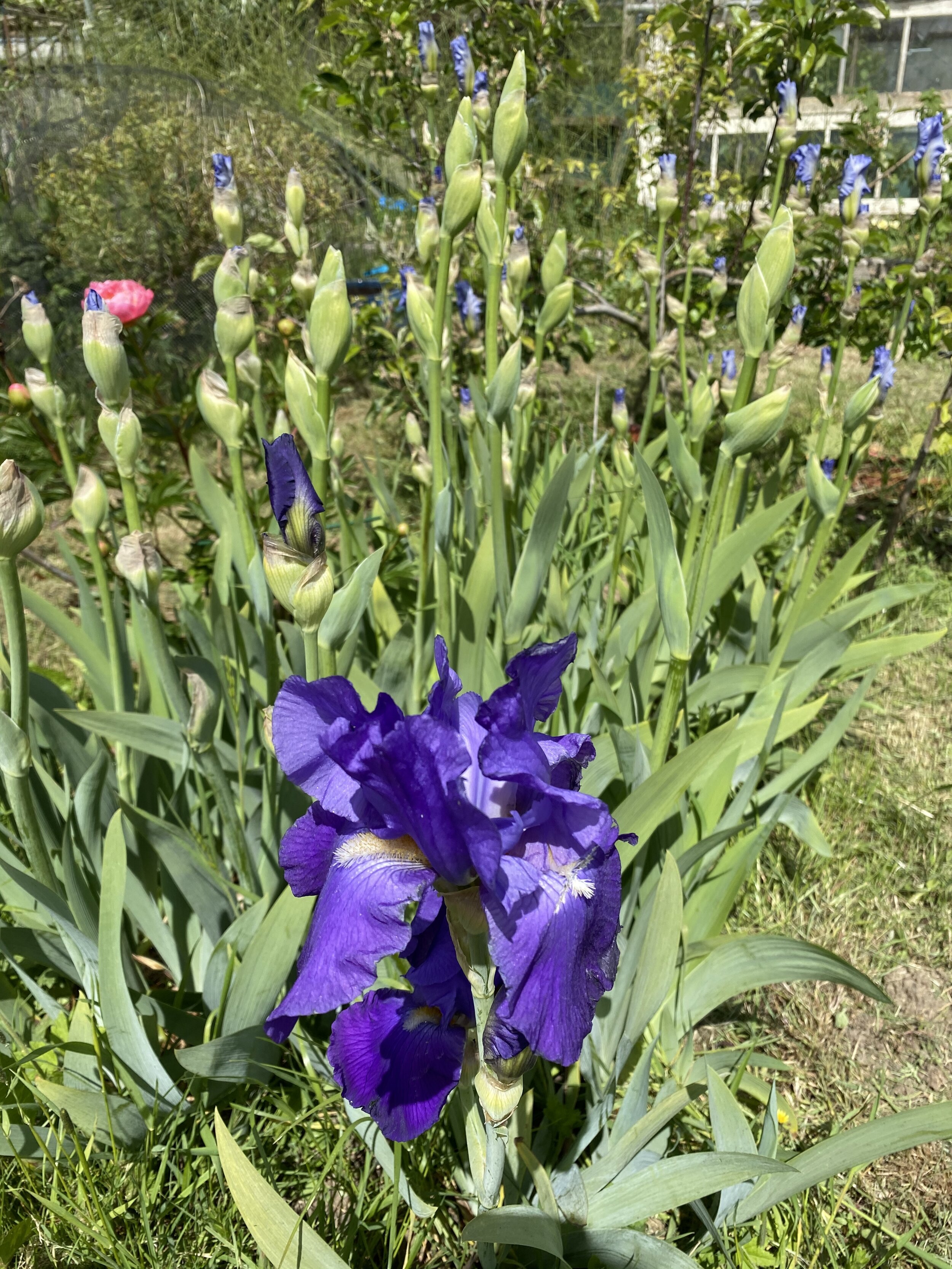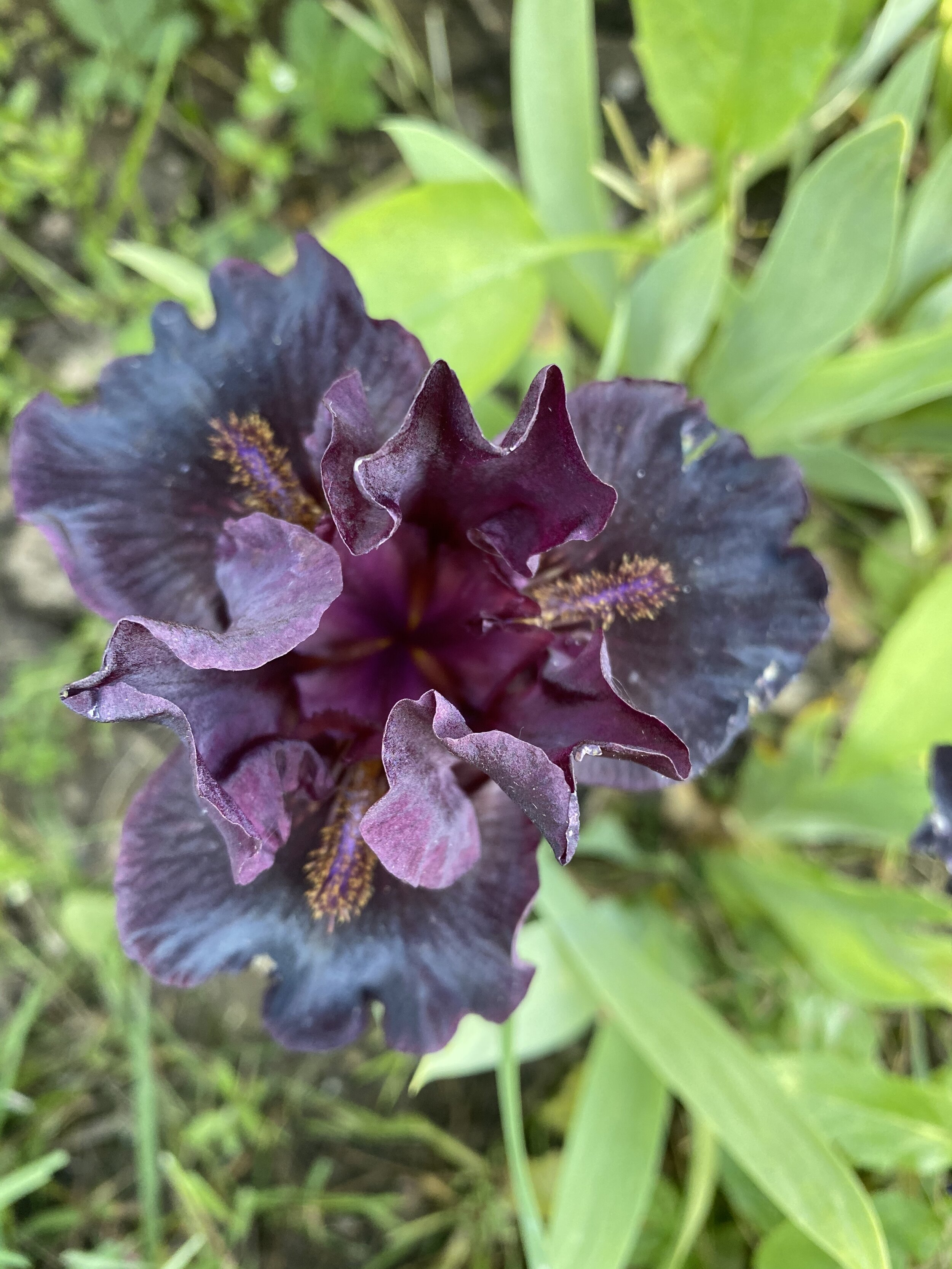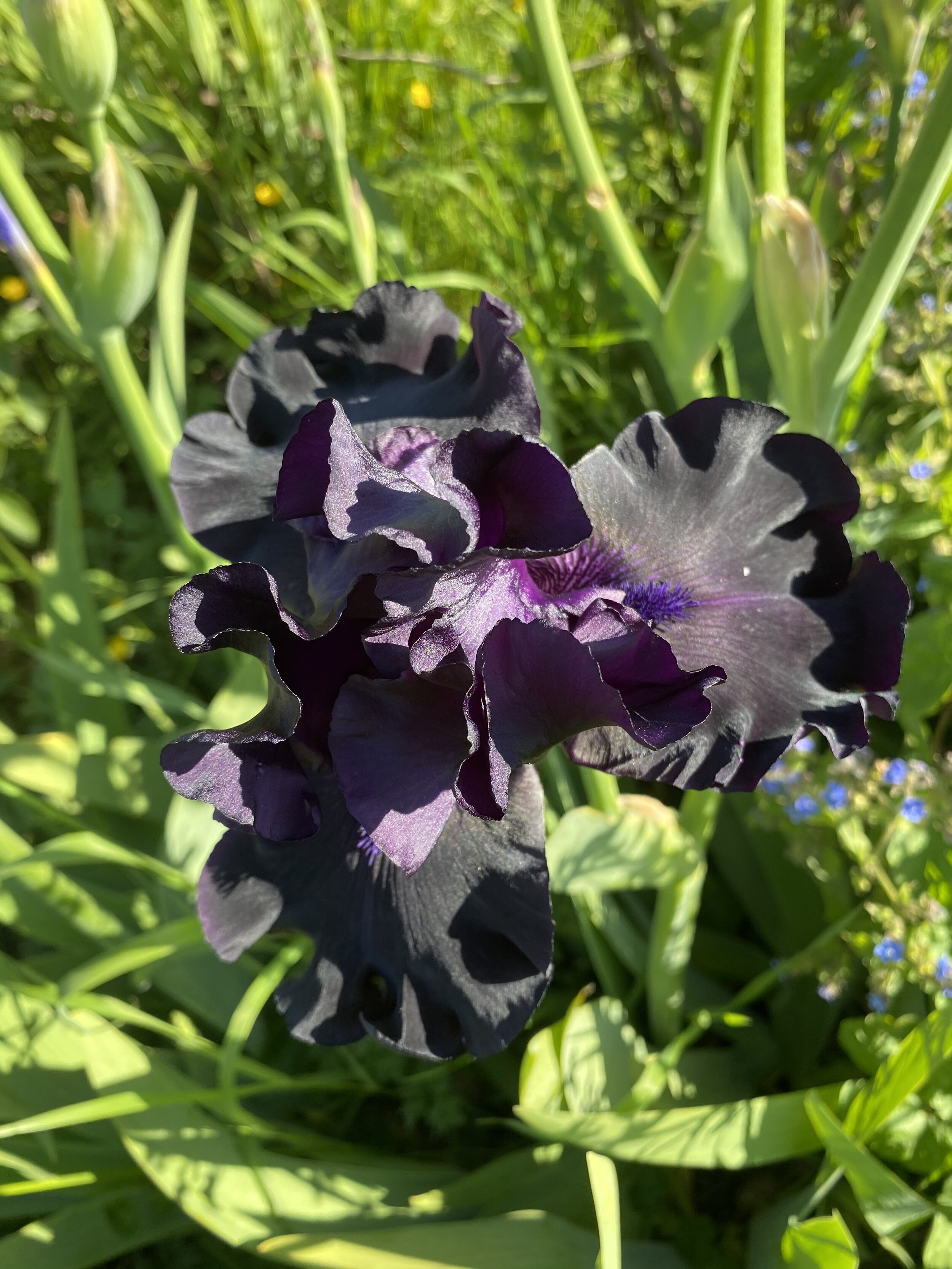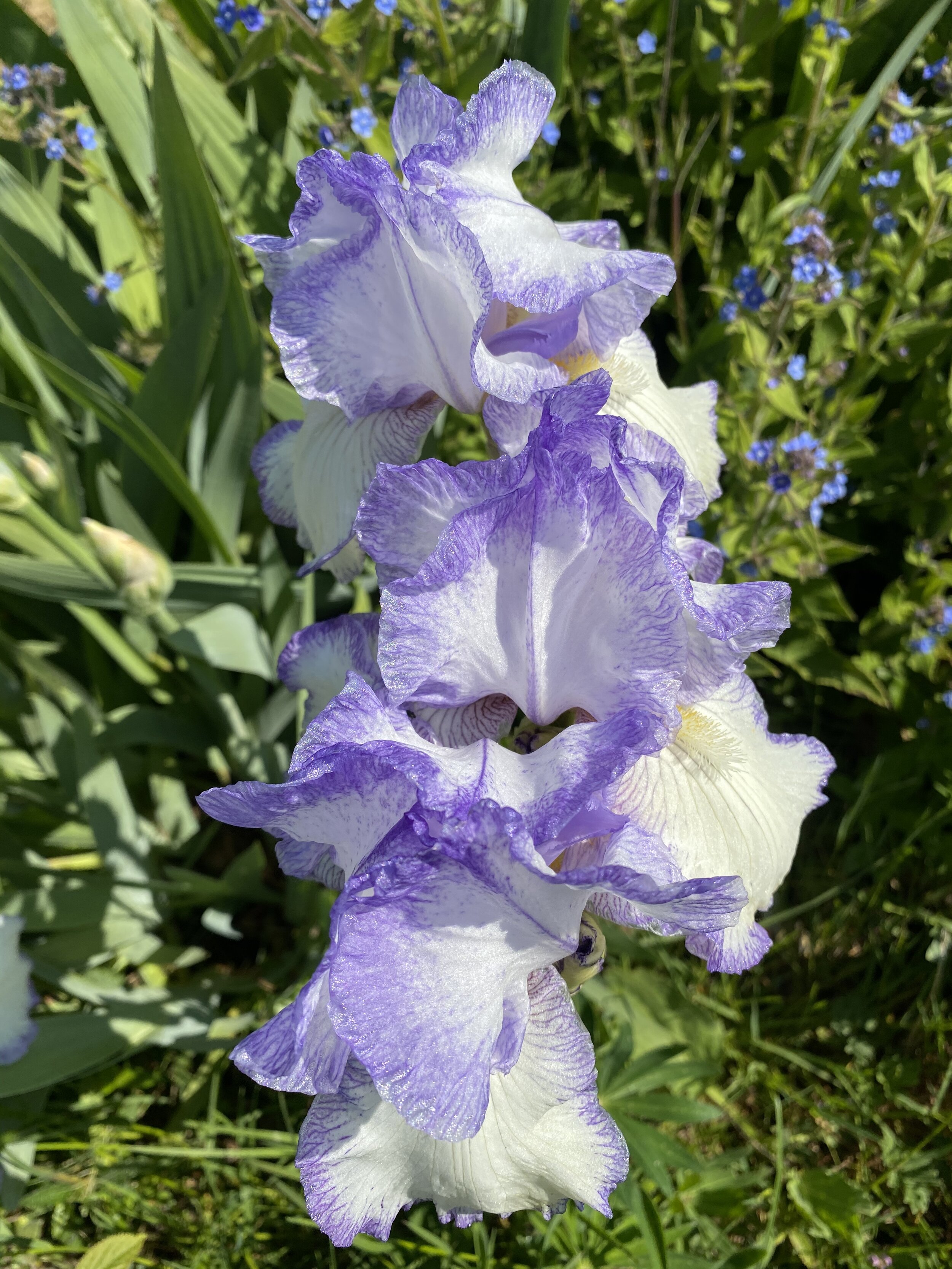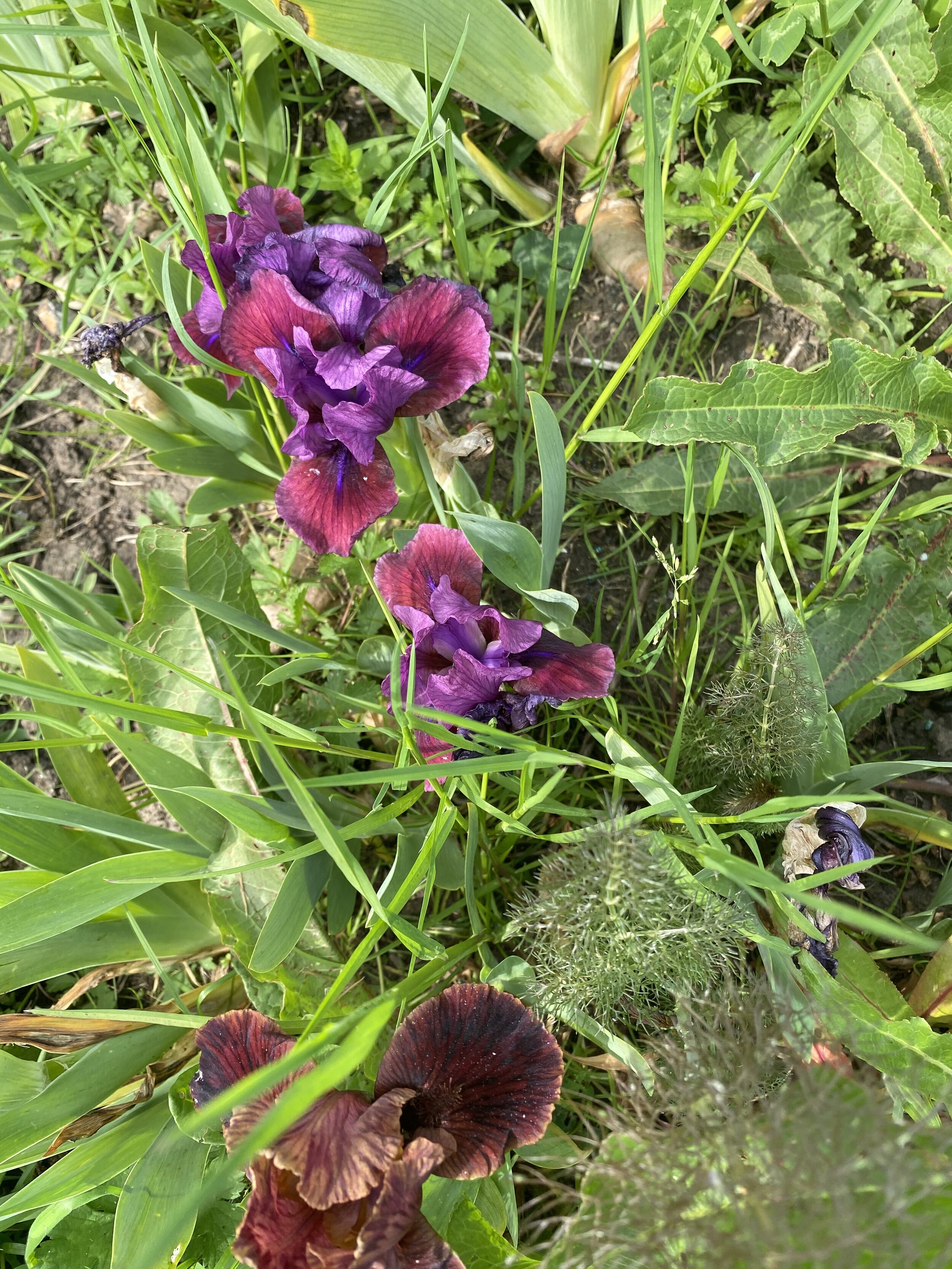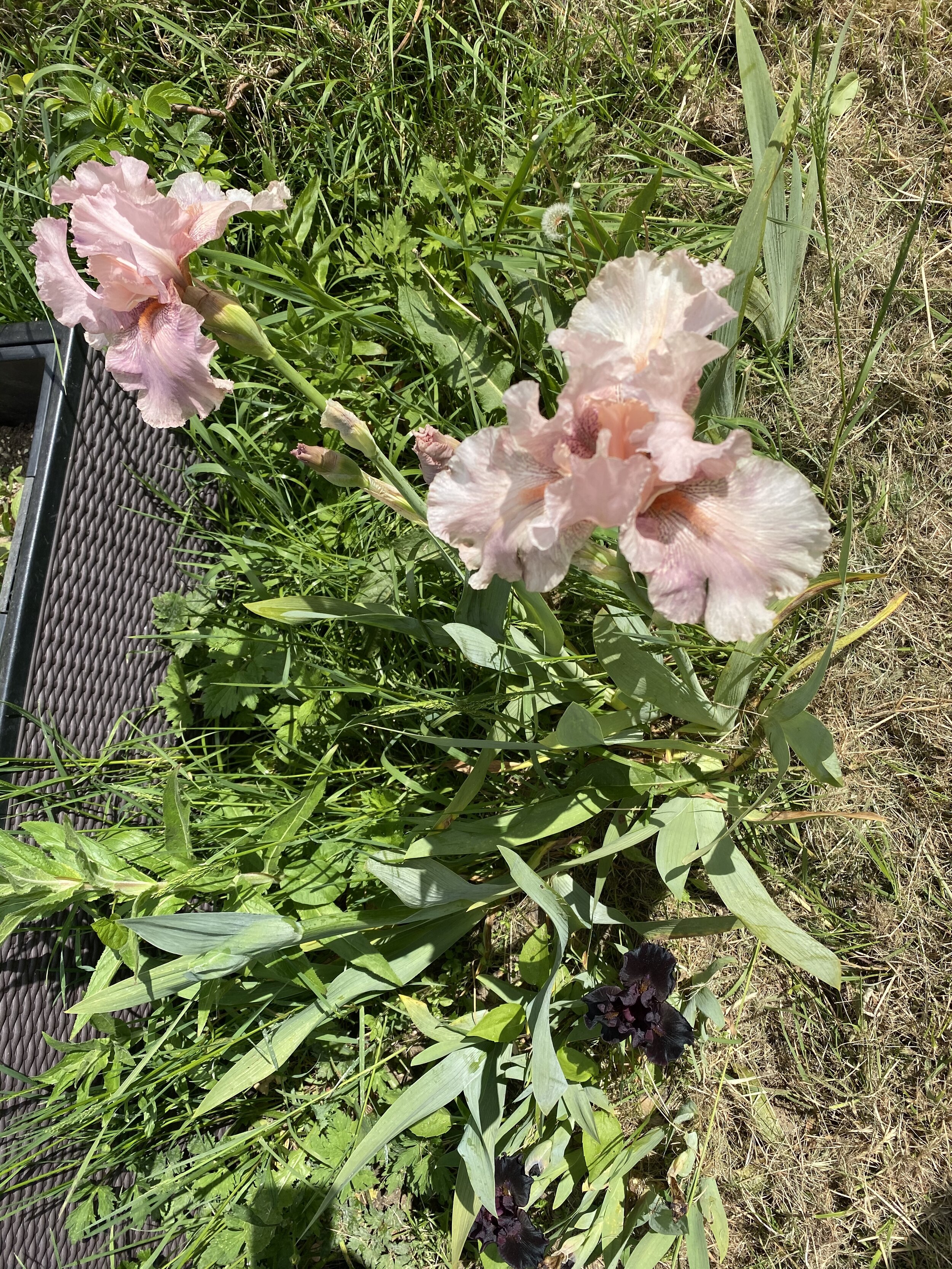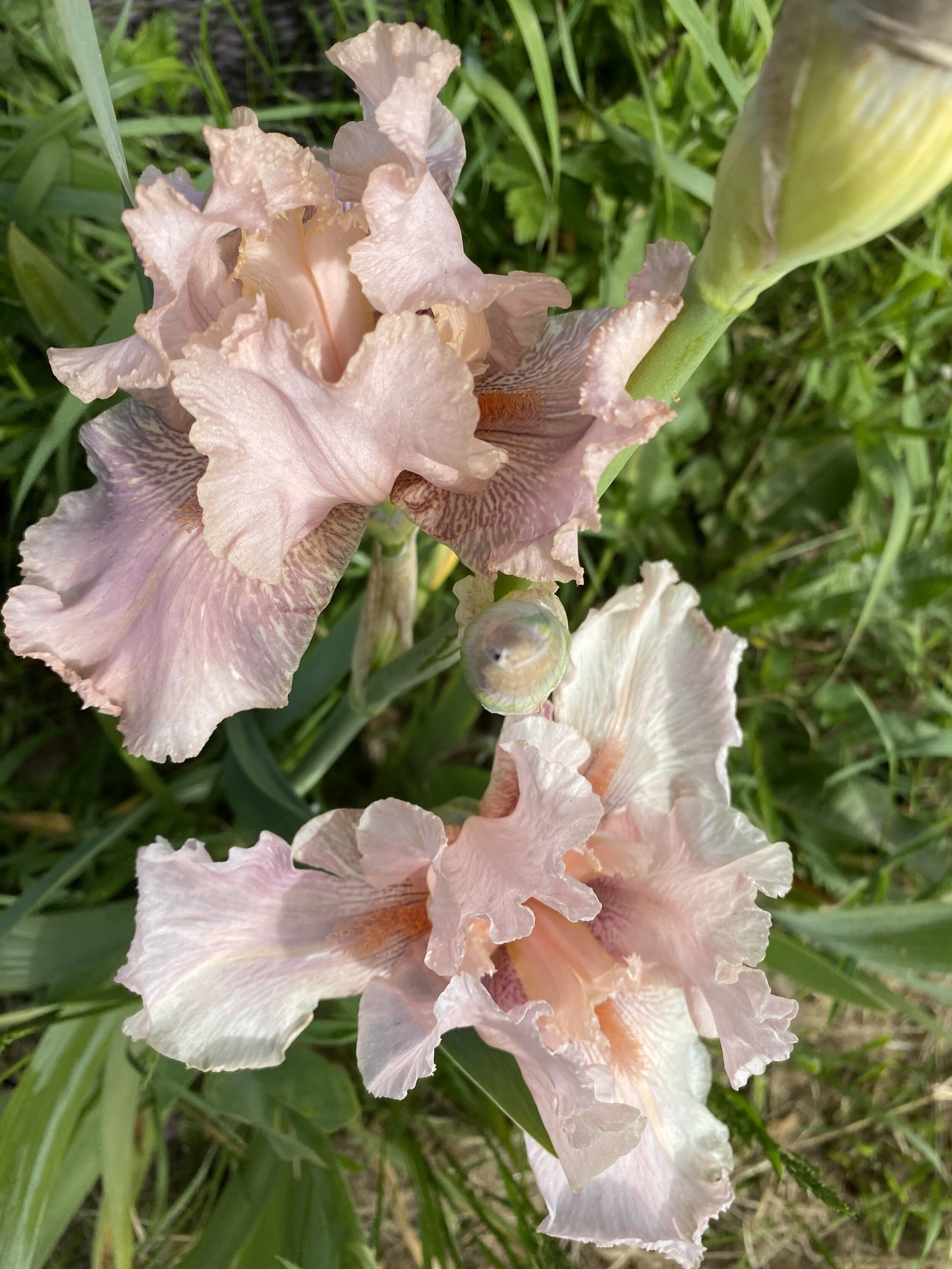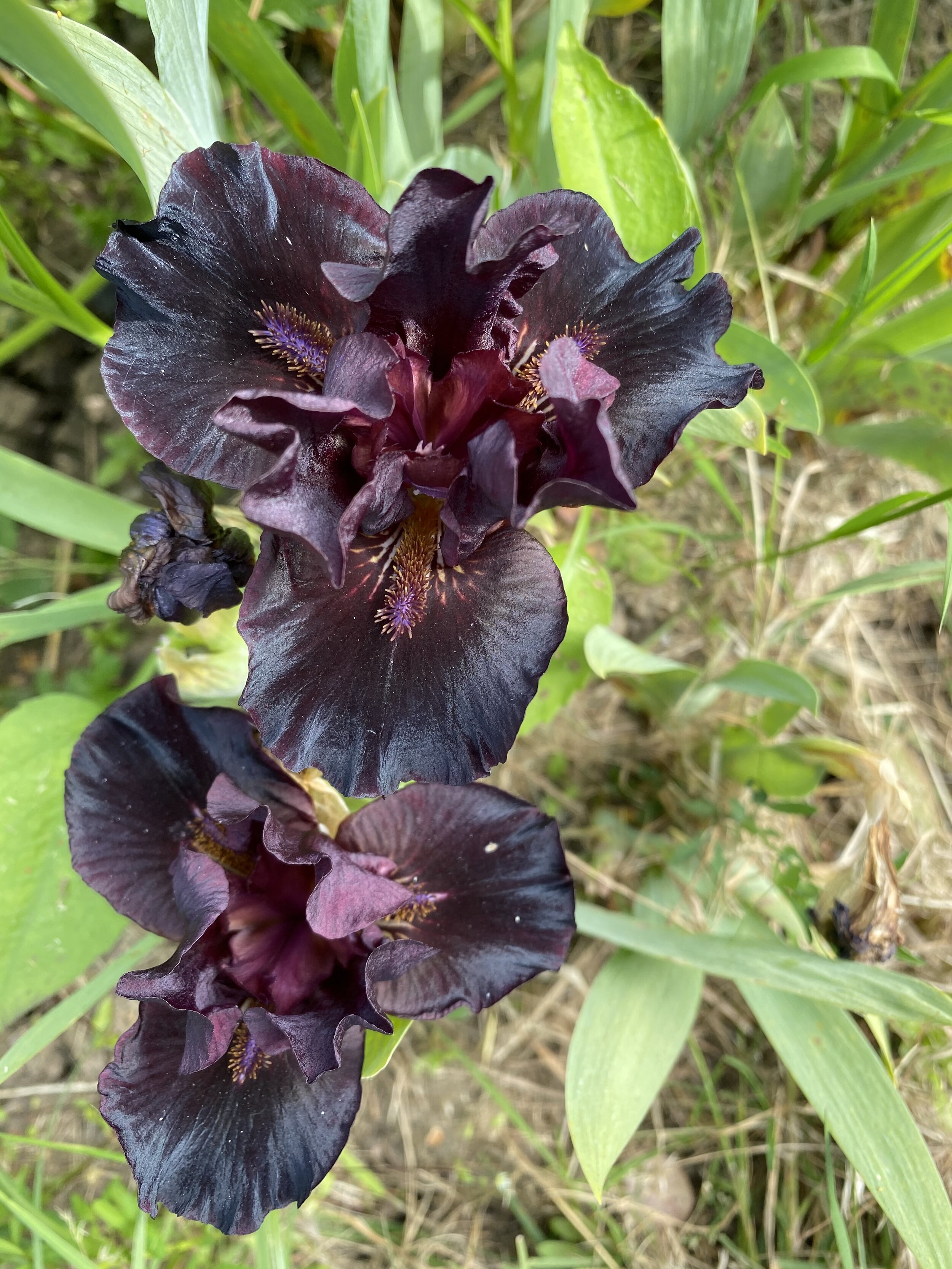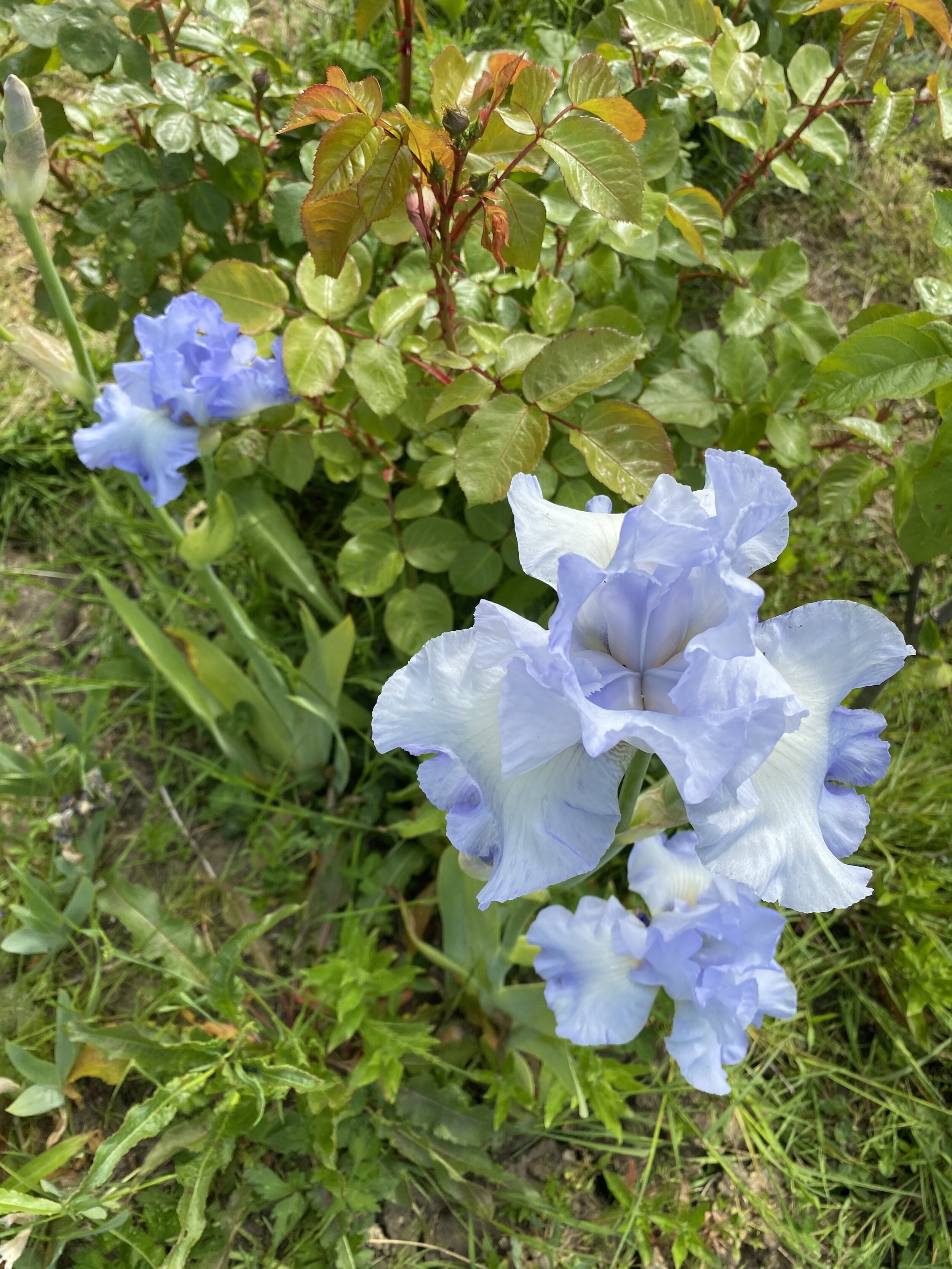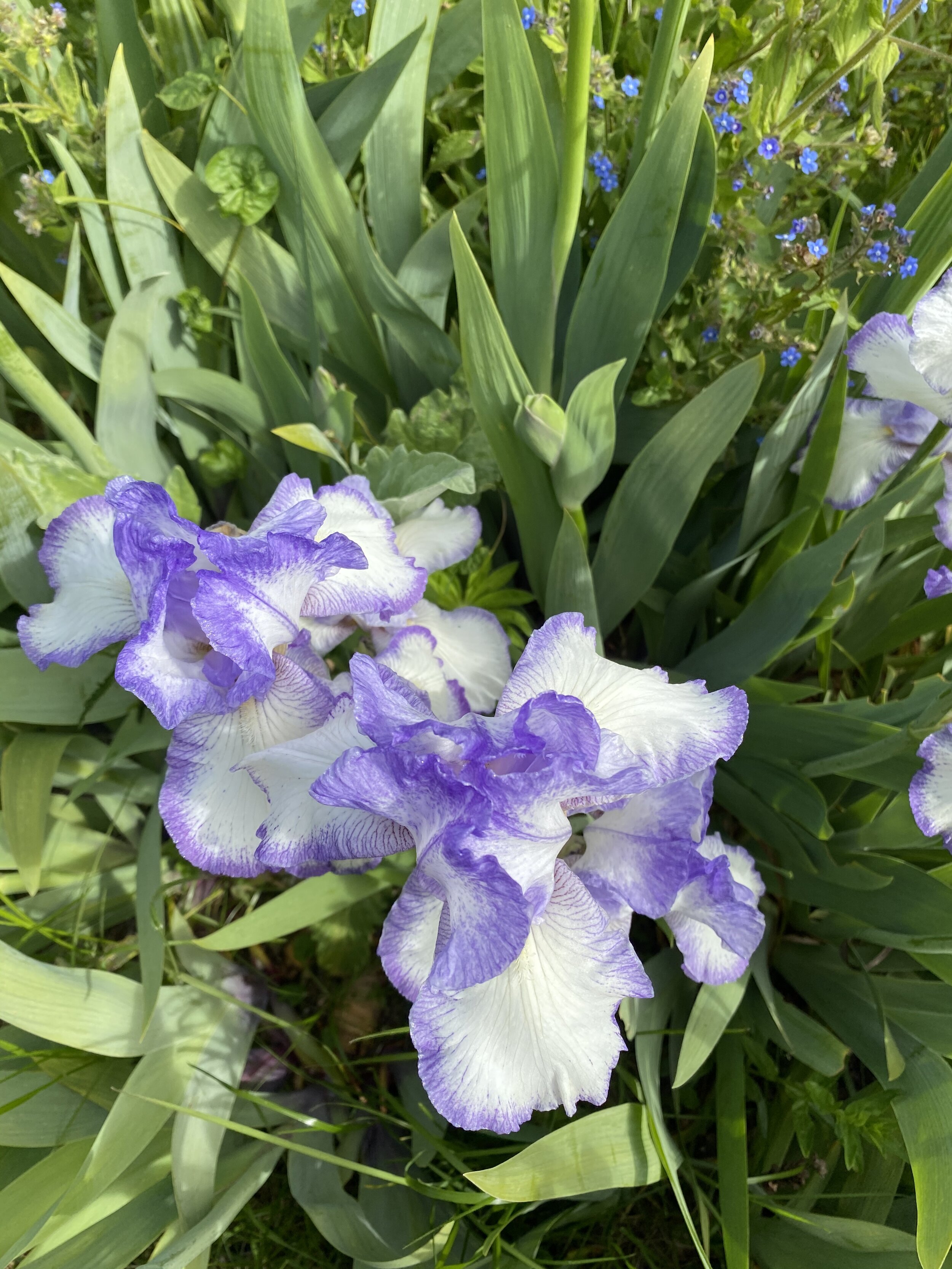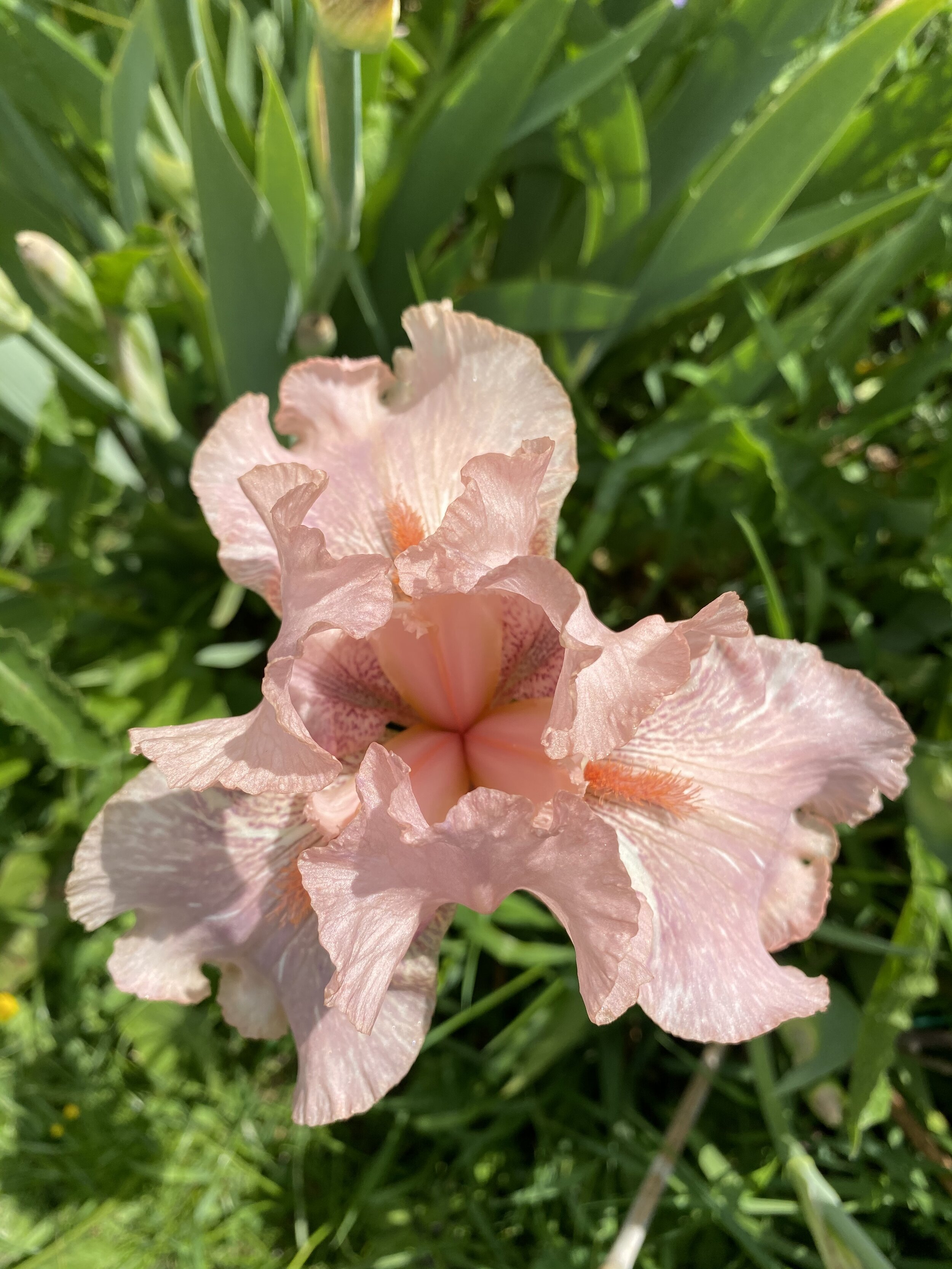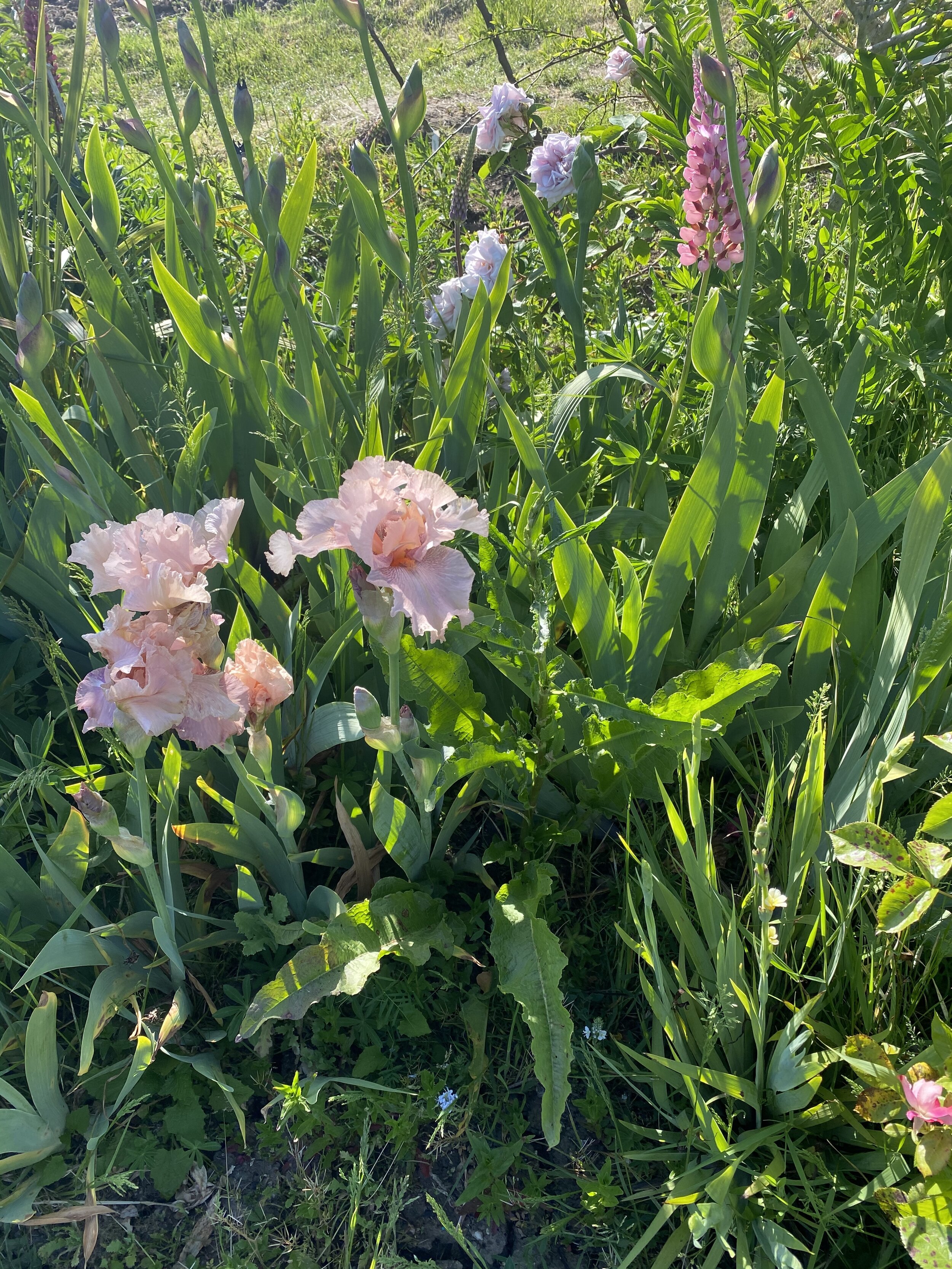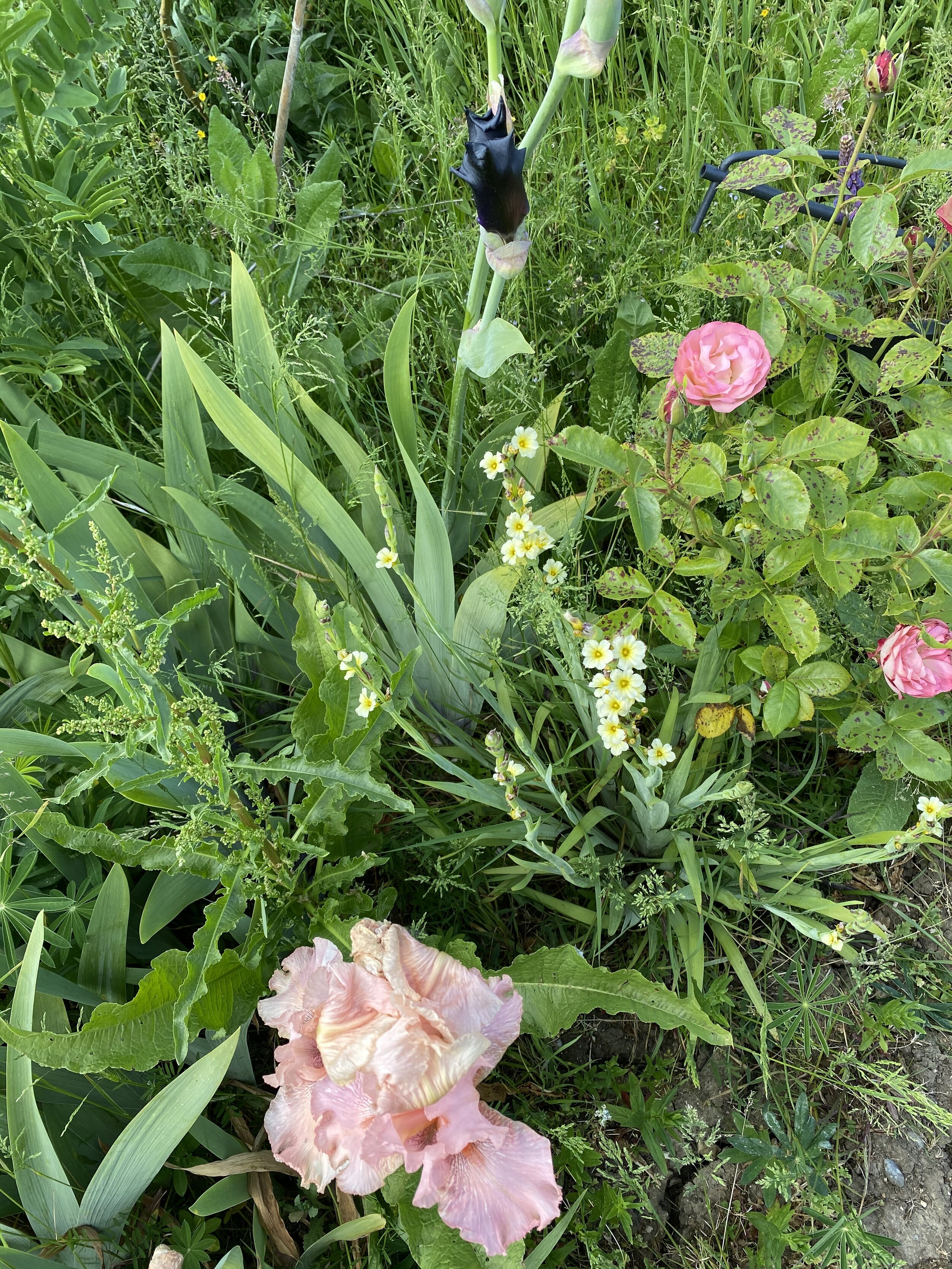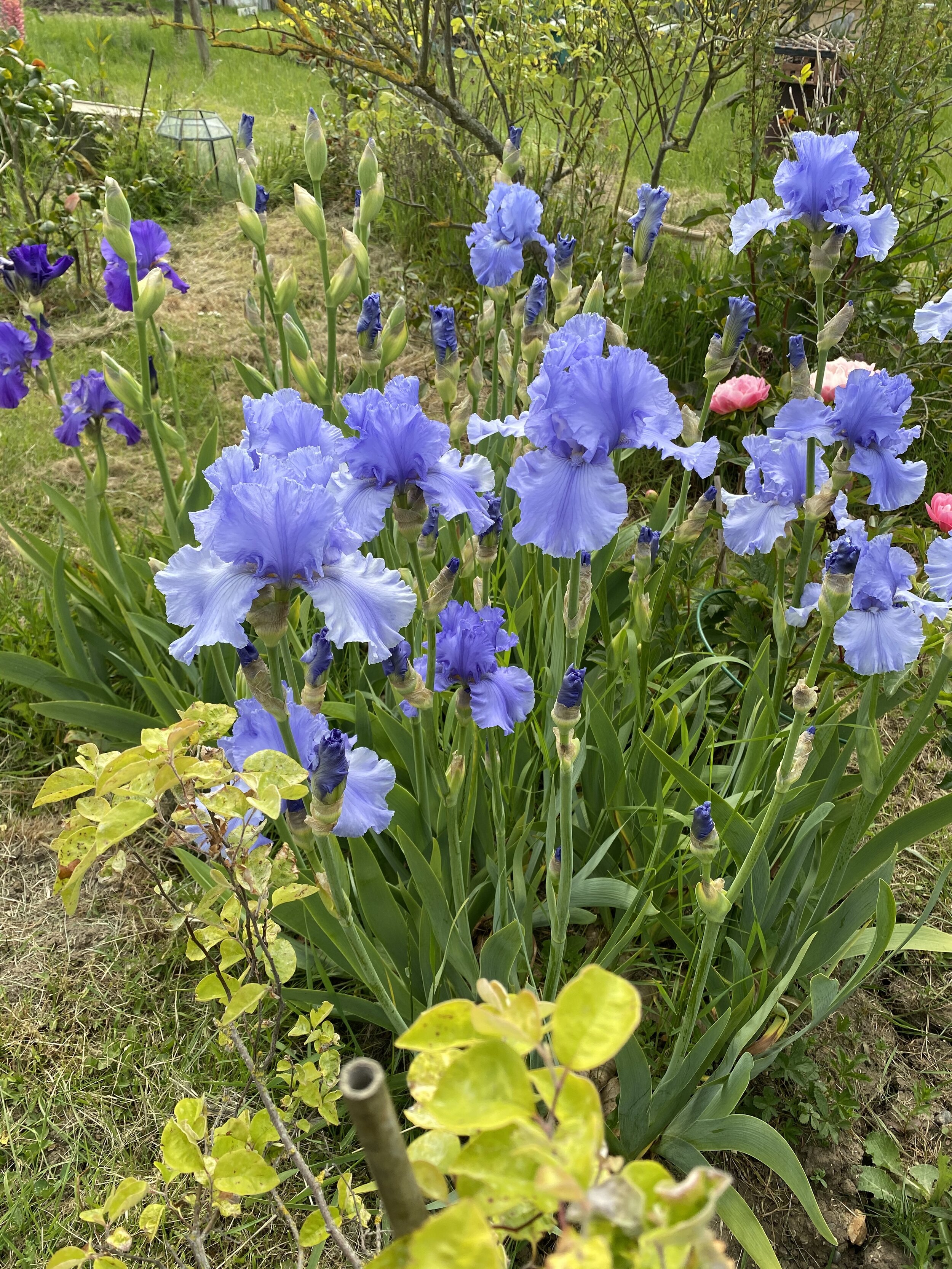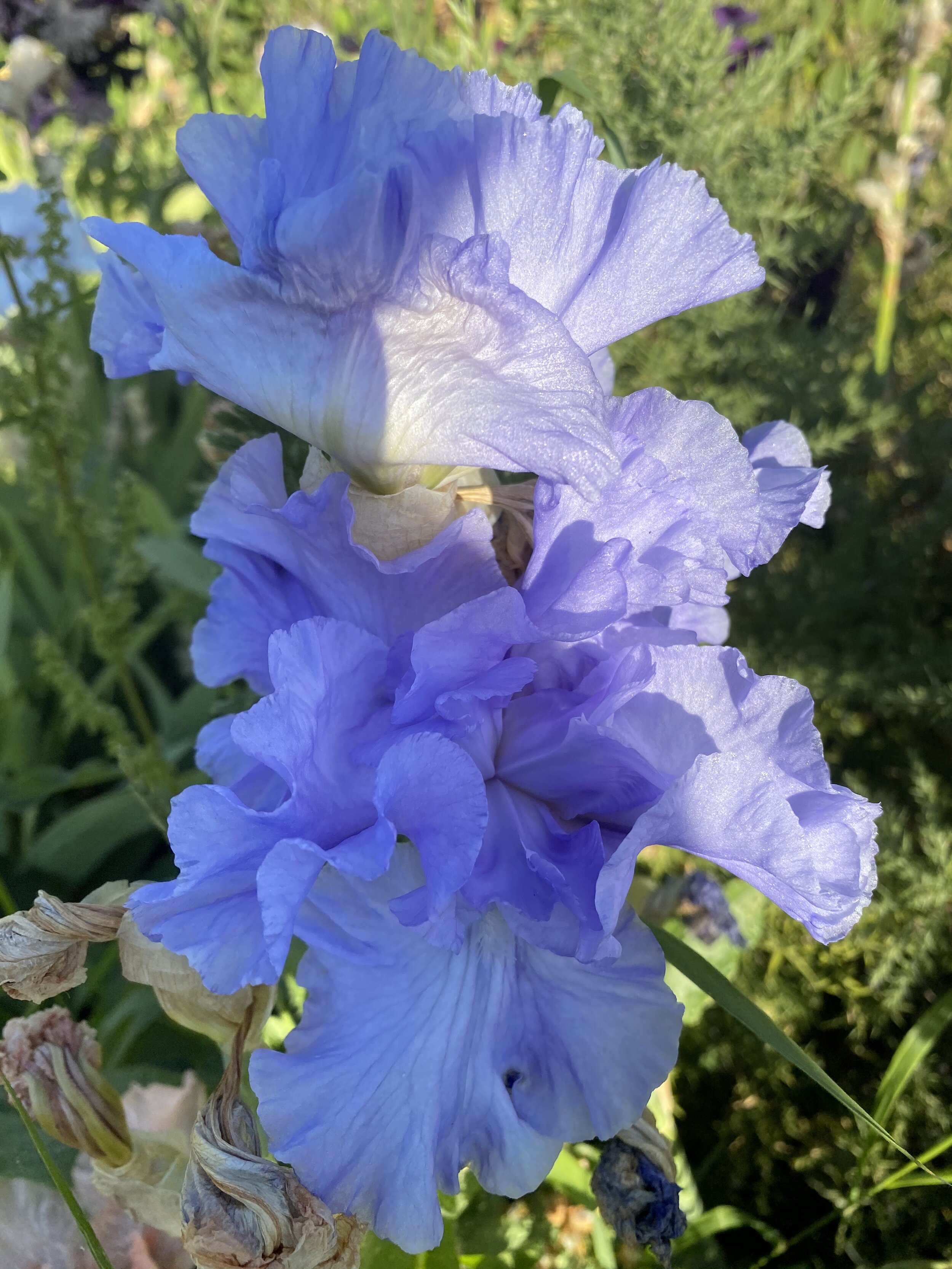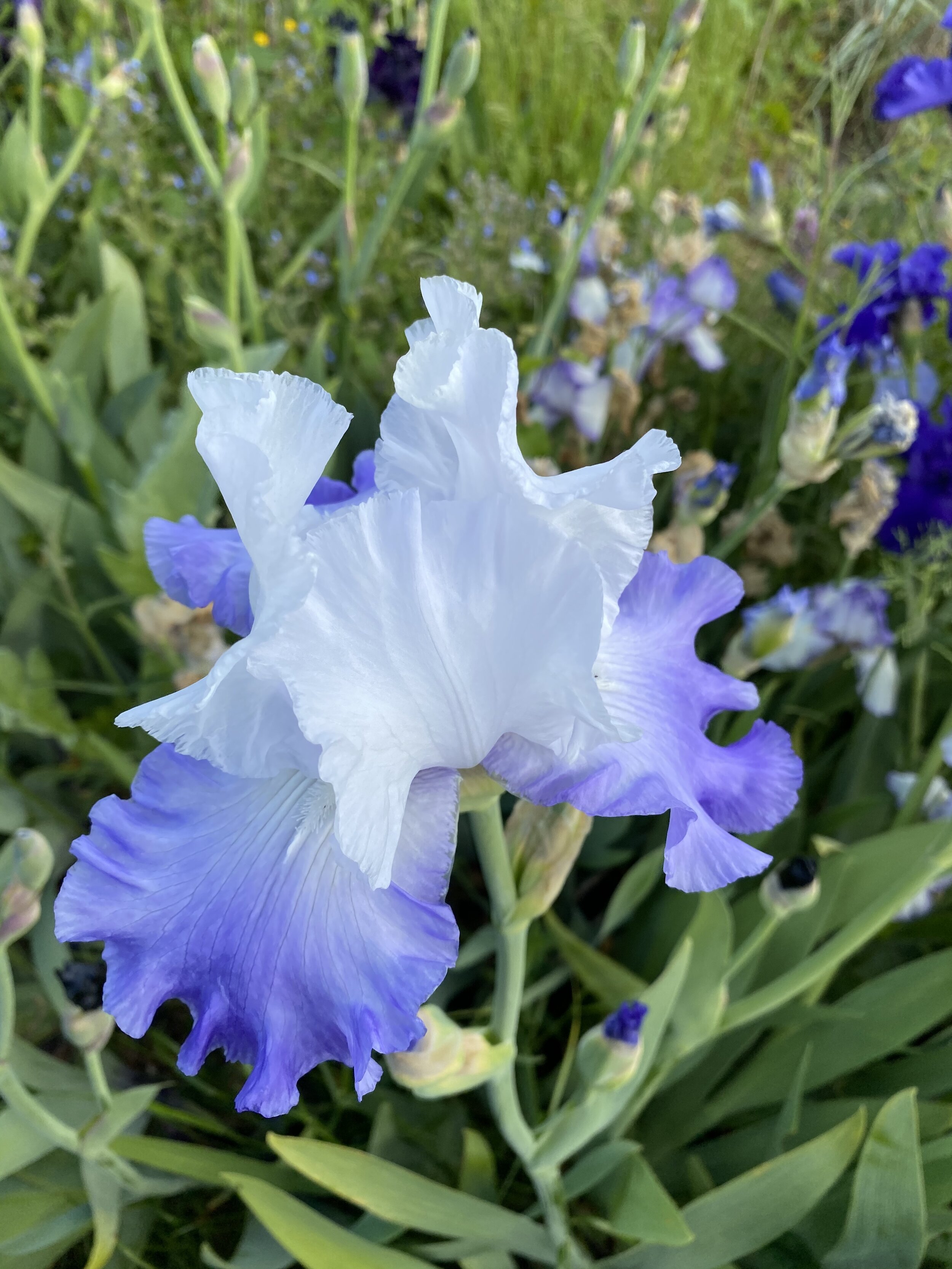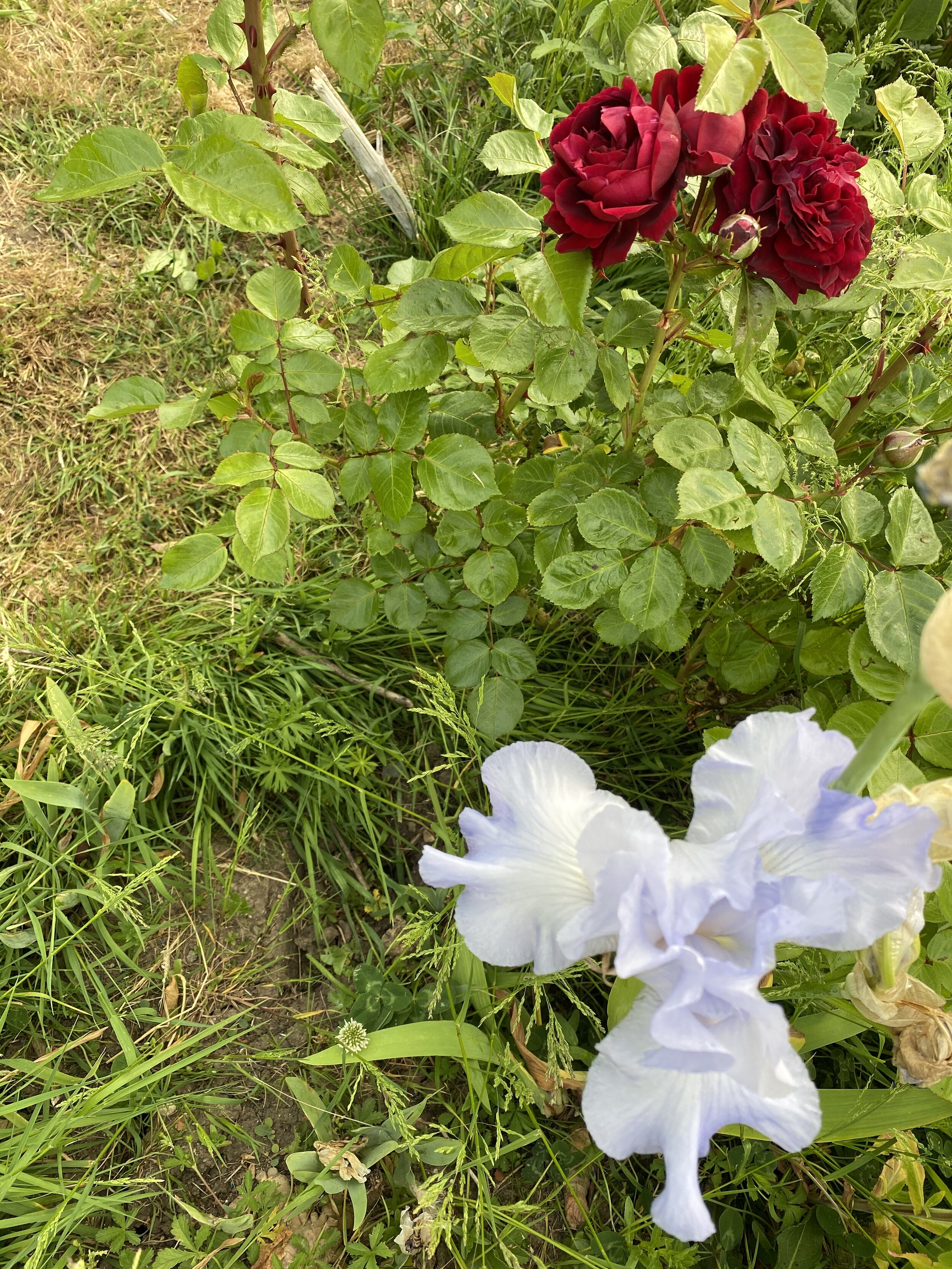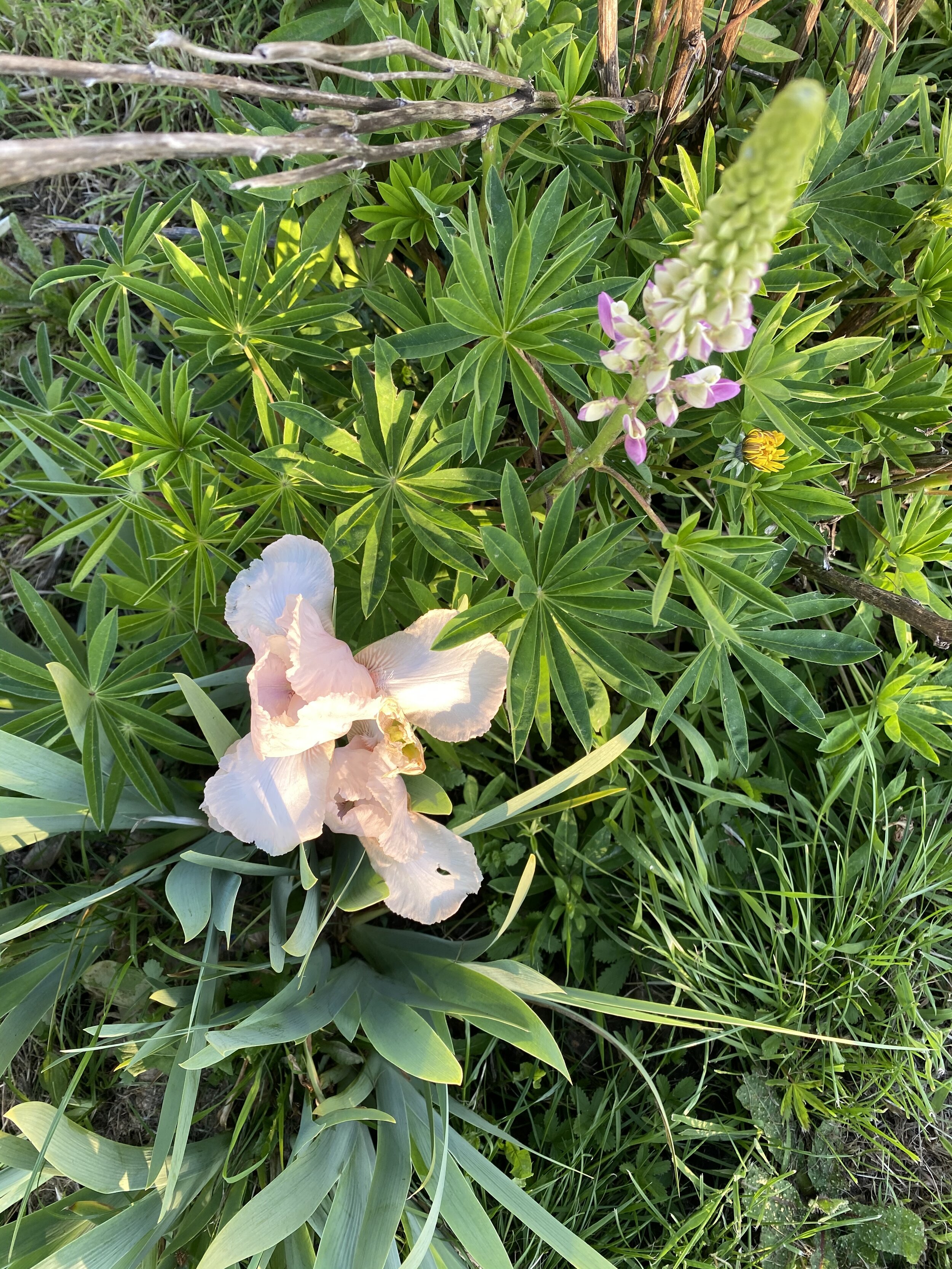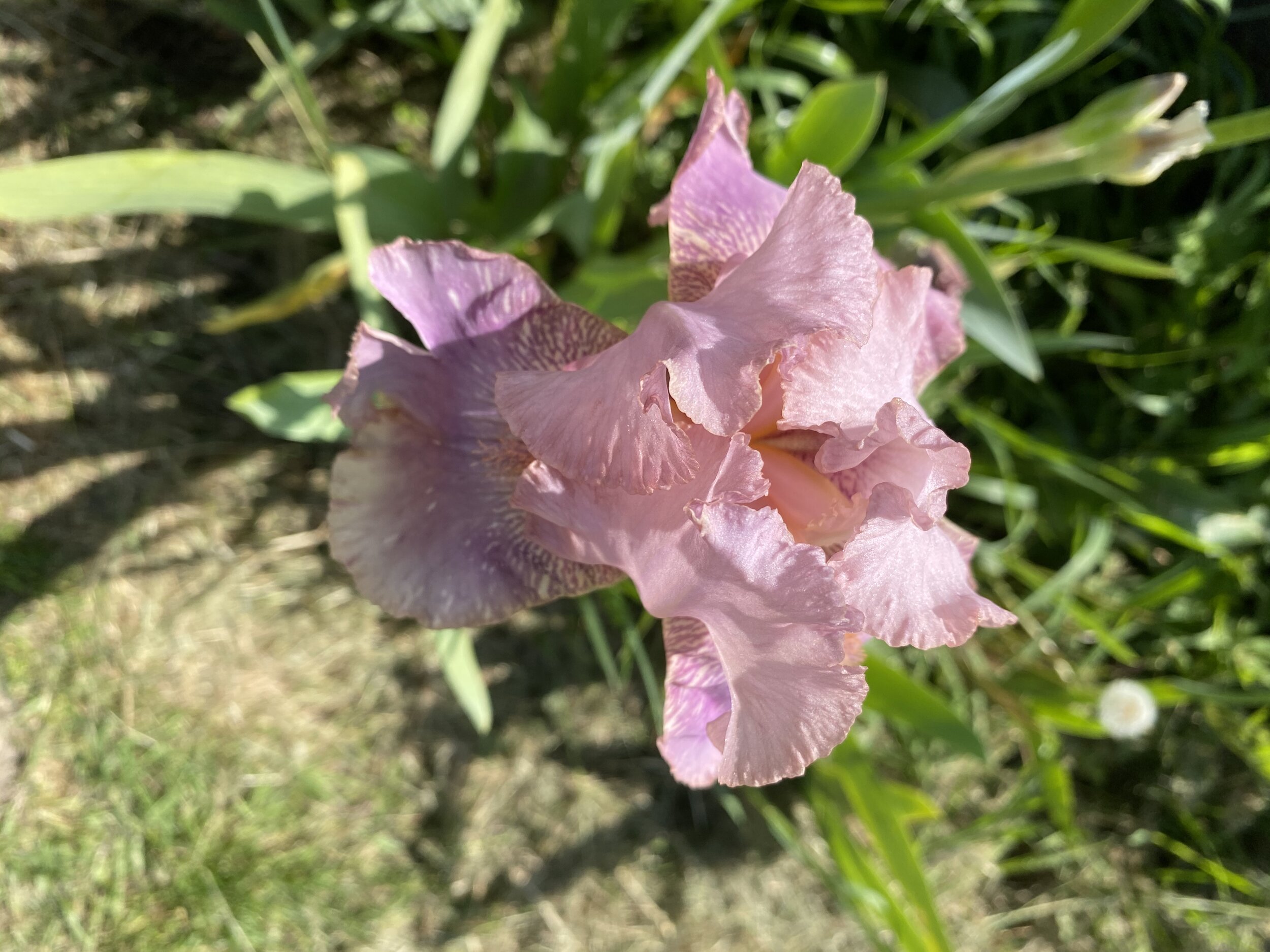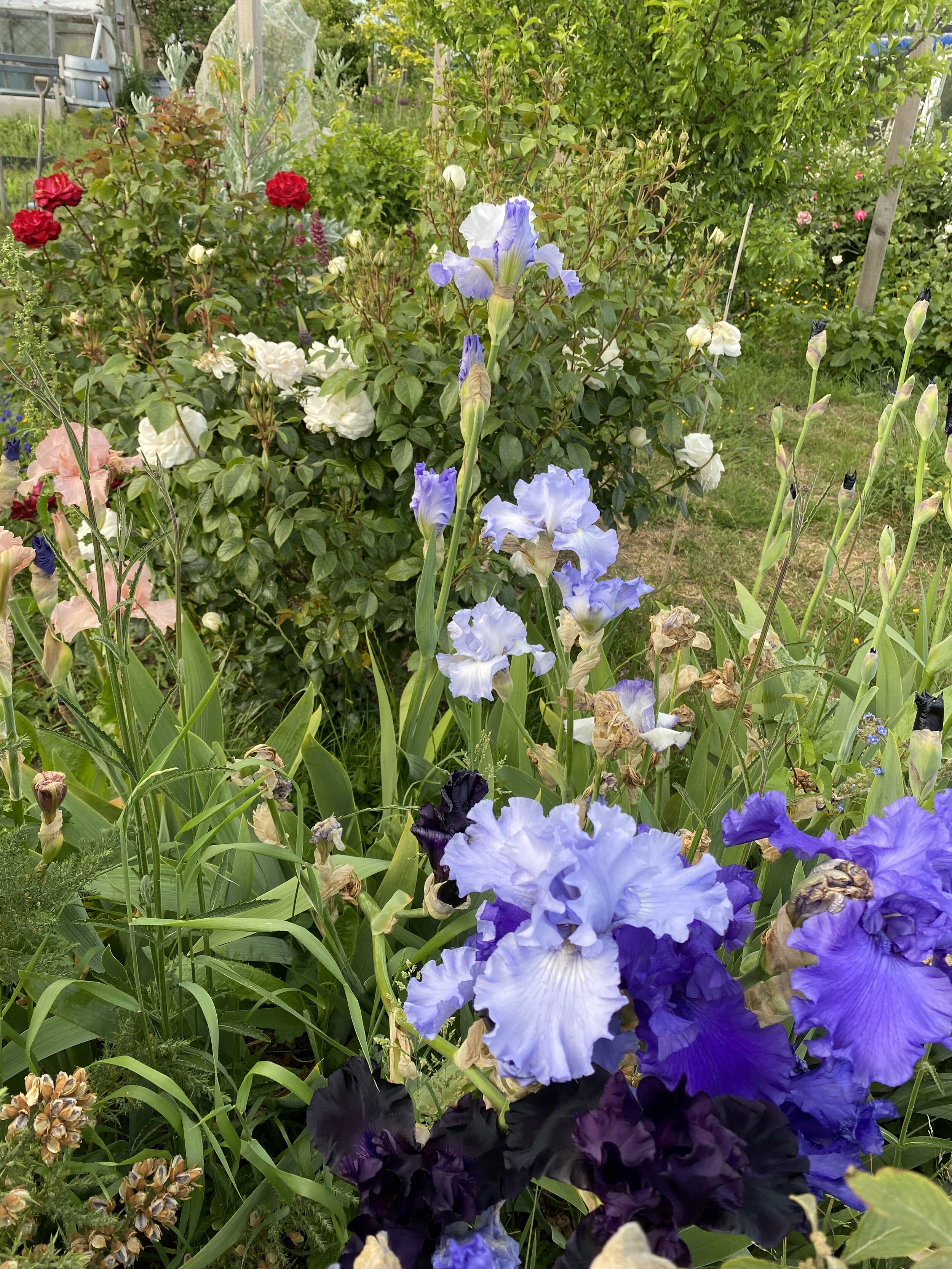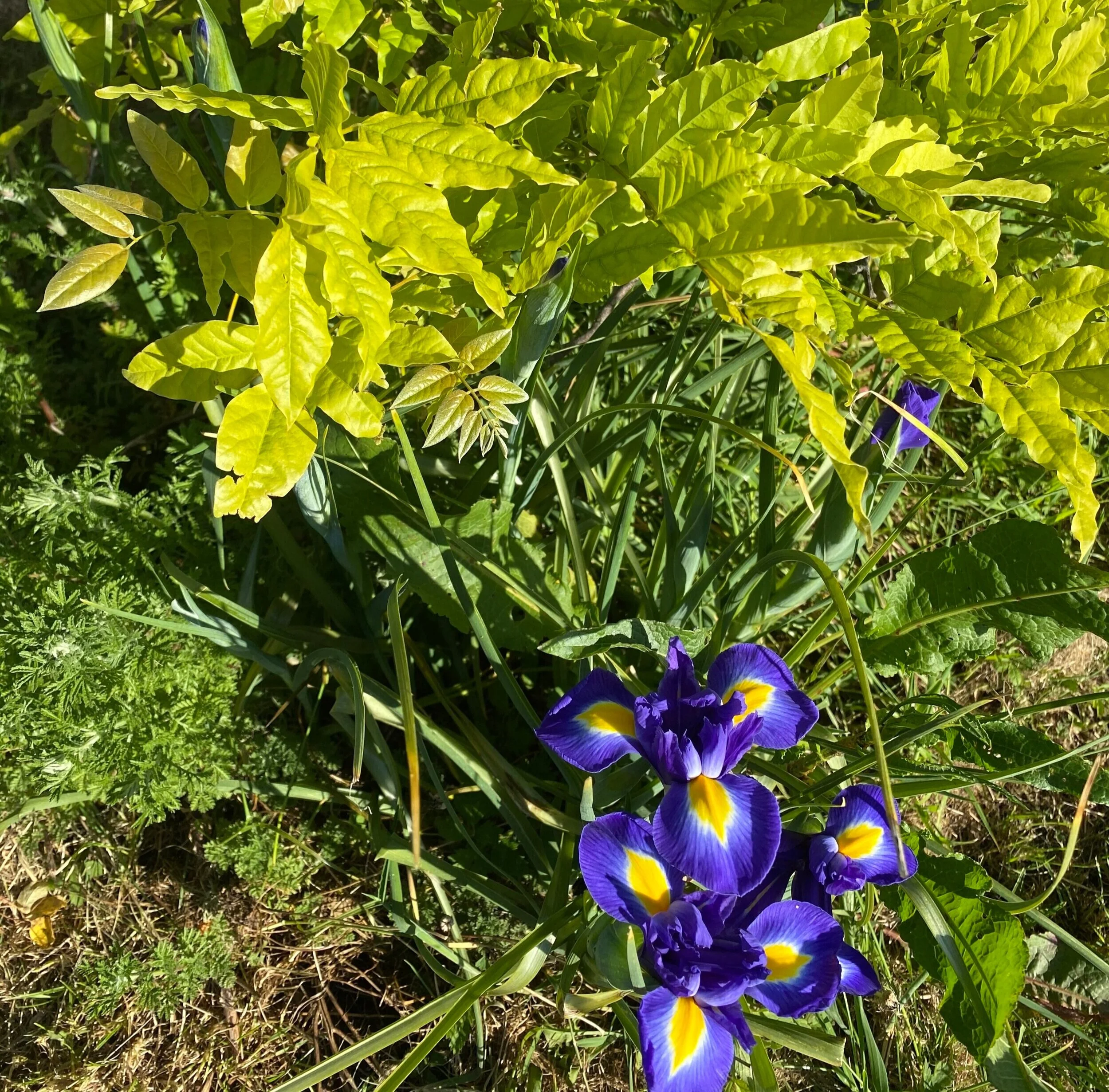For the love of irises
Vincent van Gogh’s painting, Irises, above. It is one that he is particularly famous for. He painted it in 1889, the year before his death. I haven’t had the privilege of seeing it with my very own eyes yet, but by all accounts it is indeed spectacular. Van Gogh’s irises grew within the gardens of the Saint Paul-de-Mausole asylum in Saint-Remy-de-Provence, France, where he was admitted for treatment and solace as he grappled with the ravages of poor mental health. He was able to channel his visceral torment into works of art. He called painting ‘the lightning conductor for my illness’ because he believed that painting helped keep him from going insane. I find Van Gogh’s entire life story, including his artistic genius, inspirational. He certainly left his mark in the world in spite of the many human difficulties and challenges he grappled with.
I know the positive impact that engaging with the plant world can have on one’s mental health. It can be a refuge and catharsis for tortured souls. My father, a heavily burdened soul, would spend long hours alone in the gardens and wild forests that bordered our homestead in Nigeria. I indulge in the plant world liberally. For me, it is pure natural therapy.
Vincent Van Gogh painted irises — Iris germanica, also called German Iris and Bearded Iris, to be specific. I have not tried my hand at painting irises yet, but I can proudly say that I most certainly do grow them. Yes, four different species and many varieties. And I plan to grow more in the future. I am obsessed.
I certainly gain a lot from growing them and enjoying their sight and smell each year. The Iris germanica season is special to me. It is over now, normally running from late spring to early summer, but still fresh in my memory. I do have one repeat-flowering Iris germanica that should flower again later this summer.
I’ve read that Van Gogh’s Irises of 1889 were originally purple in colour. Over the years, the purple pigment in the paint has changed to the blue we see today. Well, I get to see, smell and touch real true-blue irises on my plot, as well as those of purple and a host of other colours!
Ain’t nothing like the real thing!
Some of my blue irises
In addition to growing irises, I take lots of pictures of them at different stages of their development. I invite you to enjoy a few more of my Iris germanica beauties in all their glory!
They say that there is an iris for every growing condition in the UK. From wet, boggy soil and river banks to light, dry and free-draining.
Iris germanica are rhizomatous, evergreen perennials that with stiff grey-green strap-like leaves. Flowers are wonderfully scented, showy, and at the same time very intricately designed.
The stout, fleshy rhizomes need to partially exposed in well-drained soil and kept weed-free in order to prevent rotting. Iris germanicas like it dry, dry, dry. Please see my post of 06 February entitled ‘Iris germanica 2020: Ready, set …’ for further care information. I have a major job to do this summer, or at the very latest, next summer. That is, divide my Iris germanica plants. This will be necessary to reduce congestion, which impairs flowering. The good thing is that I’ll have EVEN MORE irises!
Mrs V’s house backs on to the allotments where I grow my plants. Last year, she came over to me one late spring afternoon, still dressed in her dressing gown and slippers. ’We’ve been looking at your irises! They’re beautiful! Then, ‘You know, you’ve had me on the internet looking at irises all morning …'.
Uh-oh! Mea culpa … someone’s been bitten! ‘Iris love’ is gloriously infectious. I absolutely adore irises! The blue (and one purple!) irises in the picture above are just of few of my irises that Mrs V was excited about.
When I divide my irises, I’ll give a few divisions to Mrs V.
Then there are the African Irises of the genus Dietes …
I have talked about growing more irises. A particular genus of iris that I want to grow in the future is called Dietes, which is indigenous to parts of southern Africa. There are fives species this African iris, but I have my eye on two that have a chance of surviving outside in London’s micro-climate (perhaps with a little help), as some varieties can tolerate short periods of frost. They are also drought tolerant. These are Dietes grandiflora or Fairy Iris (flowers 10cm in diameter) and Dietes irioides or Butterfly Iris (flowers 7cm in diameter). The flowers of both are white, with yellow and violet markings — and drop-dead gorgeous.
Dietes grandiflora, my dream. Attribution: Rojer Wisner - originally posted to Flickr as 100_3503 White Yellow & Lavender, CC BY 2.0, https://commons.wikimedia.org/w/index.php?curid=9587331
Until I get my hands on the Dietes plants I want, I have lots of other irises to think about, and pictures of irises, all taken in 2020, to drool over. Here are a few:
Iris sibirica
Also known as the Siberian Iris. This one is a variety named ‘Concord Crush’.
They are available in an increasingly wide variety of colours, thanks to successful breeding programmes.
Iris sibirica grow well in moist but well-drained soil in full sun. Watering and careful weeding may be needed until they are well-established. I’ve found that they don’t flower as well if there’s too much competition.
Iris sibirica ‘Concord Crush’
Iris x hollandica
Also called Dutch Iris. Interestingly, it is a hybrid created by crossing Iris tingitana from North Africa with two varieties of Iris xiphium (var. praecox) from Spain and (var. lusitanica) from Portugal.
This is is a bulbous iris that likes moist but well-drained soil and full sun or partial shade. They are available in a variety of colours and colour combinations and make excellent cut flowers.
Two colours of Iris hollandica growing alongside Sisyrinchium plants
Iris reticulata
This is a bulbous dwarf iris (up to 15cm tall) that blooms in late winter or early spring. Iris reticulata is native to Russia, the Caucasus, and northern Iran, but cultivated widely in temperate regions. It grows in well-drained and moist but well-drained soils in full sun.
Iris pseudacorus
Also called a Flag Iris or Yellow Iris. This species takes the name ‘pseudacaros’ from "false acorus", which refers to the similarity of its sword-like leaves with a prominent mid-vein to those of Acorus calamus (no relations). It is a herbaceous rhizomatous perennial, growing to 100–150 cm. The flowers are bright yellow, 7–10 cm across, with the typical iris form. It is native to northwest Africa, Europe and western Asia. This is a particularly hardy iris that grows best in wet soils.
Attribution for picture at the top of the page and post thumbnail: Painting by Vincent van Gogh - DgFVFAJo_30MeQ at Google Cultural Institute, Public Domain, https://commons.wikimedia.org/w/index.php?curid=22175016



